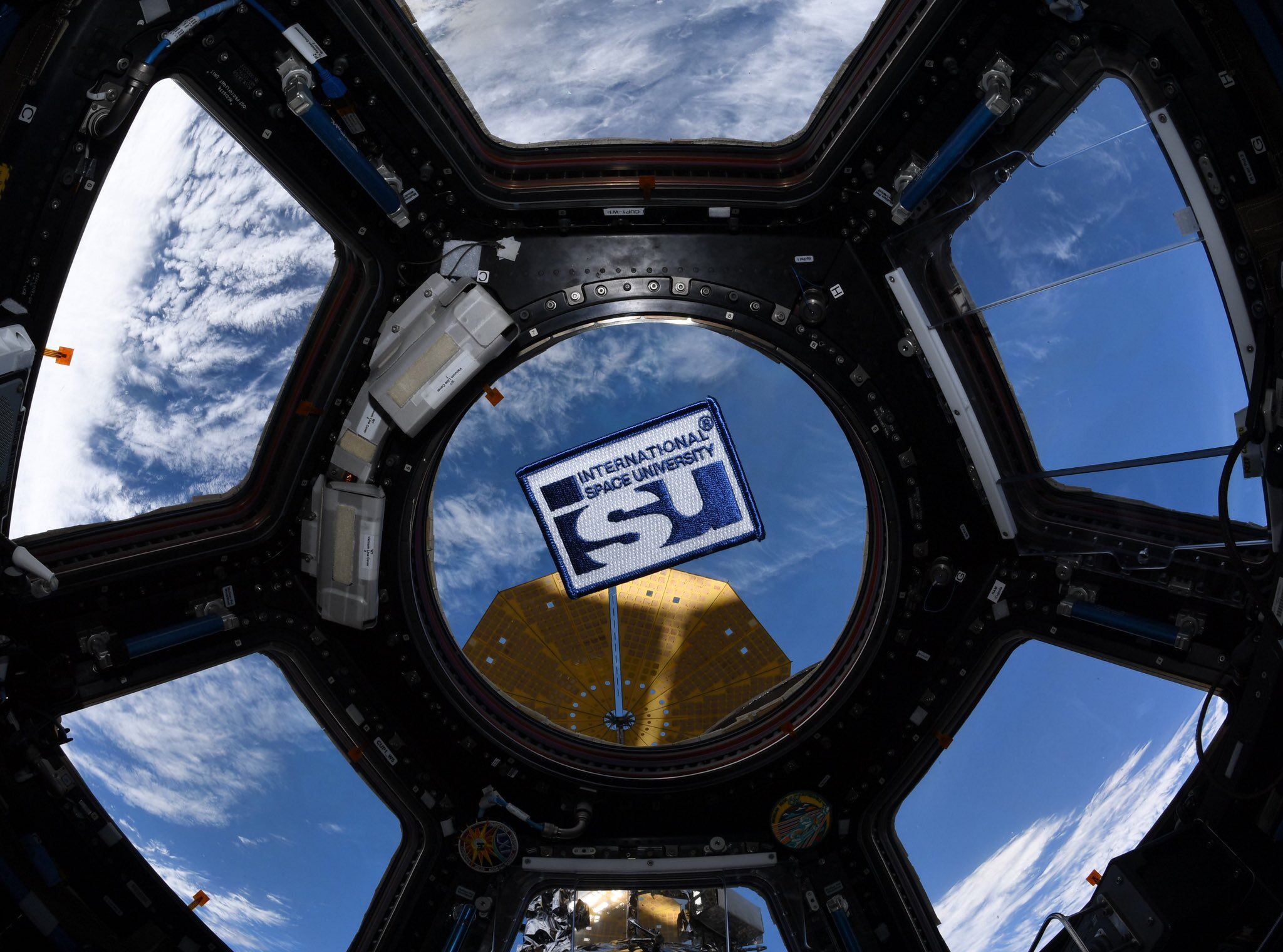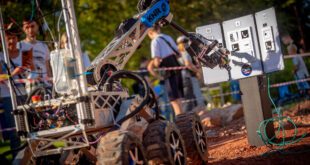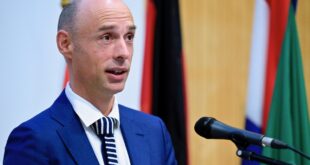By Nicolas Peter

To say that the space sector has seen tremendous growth in the last decade has become somewhat of a platitude. Countless reports show impressive growth and a positive outlook for the future, even suggesting a new ‘golden age’ for the industry. There is also a wide consensus that for the space economy to reach the promise of morphing into a multi-trillion-dollar valuation in the decade to come, we need a strong, resilient, and innovative sector. The health of the space sector today and tomorrow will thus be key to achieving the goals that the space community wishes to see in the years to come.
The current health of the sector is strong by all metrics at a global level. Note for example the record number of payloads launched year after year, the increasing number of launches, the new and ambitious institutional or commercial mission plans, and the entry of new actors in the sector. But several elements will impact its future direction. The biggest hurdles facing the industry, whether for space agencies or space companies, are two uncertainties: uncertain access to funding (both public or private) and the untold and silent uncertainty which is the workforce issue – ranging from education, training, and retention of talent in the sector. Both hurdles are of key importance to countries, agencies, companies- big or small, old and new- and research and technological organizations as they grow and remain capable of executing their purpose while remaining competitive.
ISU’s philosophy as it relates to its academic approach encourages international, intercultural, and interdisciplinary collaboration.
Capital -both financial and human- are among the main key ingredients in all space ecosystems. Yet human capital in particular takes time to grow, but has long and significant payoffs. However, the ‘human factor’ is often overshadowed by budget concerns or technological development, for instance. The space sector has for too long relied on its intrinsic ability to develop young people’s curiosity about space exploration, to inspire them to study STEM (Science, technology, engineering, and mathematics), and more generally to help build a more scientifically literate society in the hopes that this will be enough to provide a talent pipeline for the space sector.
Although the sector’s intrinsic ability to inspire remains relevant, this may no longer be enough to support the growing needs of the industry. The world has changed, and younger generations have changed. It cannot be expected that inspiration alone or a ‘build-it-and-they-will-come’ approach will be sufficient in addressing the growing talent gap in the sector. Space stakeholders need to acknowledge that challenges to building human capital are lurking just around the corner and must try to make the sector appealing and accessible for the widest base possible. It needs to become clear that there is room for everyone and not only for Astronauts/Taikonauts/Gaganyaan/Cosmonauts, principal investigators (PIs) of space missions, Heads of space agencies or companies. Those individuals with fantastic careers and achievements are only the hummock, the tip of the iceberg, the visible ones. It must become clear rather that a whole variety of other jobs and careers and, most importantly, a variety of people are needed. What matters in reality is what lies just below the surface. The bummock, the largest part of the iceberg which remains hidden, represents the overwhelming majority of employment needs for the sector. These professionals are critical because they make missions possible; they build satellites and rockets, operate them, develop the appropriate legal and policy frameworks, and so on.
Behind current and future space projects -and the space economy at large- are humans working together and collaborating to find interdisciplinary solutions to complex problems. But to continue the earlier analogy, a changing climate means the icebergs are melting. Though the hummock remains visible to the bitter end, more worrying is the decay of the bummock due to the multiplication of new and appealing tech jobs in other sectors along with the changing perspectives of the new generation (Gen Z or Millennials) as they consider career aspirations and studies. Compounding the problem is the upcoming retirement wave that will be impacting Europe, North America, and Japan in particular.
There is an increasing competition for talent between the space sector and other domains.
The melting of relatively small icebergs such as “traditional” space employees (aerospace engineers, data scientists, etc.) means that today -and we can expect even more in the future- there is an increasing competition for talent between the space sector and other domains. Meanwhile, companies and agencies are also competing for the same pool of talent in order to remain relevant and productive. Furthermore, the bummock of today’s ecosystem requires a tremendous variety of skills and people with different educational and professional backgrounds to work together as the industry continues to expand. A few examples of such diverse backgrounds are obvious: lawyers and policymakers are needed to help define international agreements and industry best practices; health professionals to monitor human performance or pharmaceutical processes; technical experts to manage the increasing variety of space applications; and mechanics to work on large assembly lines for satellite manufacturing. Other examples are perhaps less obvious but nevertheless essential to the current and future health of the sector: executives, sales and logistics, project managers, marketing professionals, even artists or graphic designers. These individuals are essential for any commercial or government endeavour and their organizations benefit from the specialized knowledge of their field in addition to a global, yet thorough understanding of the sector in which they work. Space is a dynamic sector that is evolving beyond an age dominated by scientists or engineers.
Since 1987, the International Space University —or ISU—has been at the nexus of such interdisciplinary collaboration and a major contributor to the growing workforce needed for space. ISU gives its students and program participants an in-depth understanding of space while providing a clear path for talented individuals to find their place in the ecosystem. ISU provides high-quality training and education to help students and professionals with diverse backgrounds apply their talents to a variety of organizations involved in space ranging from agencies to academia, as well as companies such as innovative start-ups created by ISU alumni all over the world. It is the only institution dedicated entirely to space education and has come to be highly regarded by industry and agency leaders due in part to its extensive alumni community – over 5,600 members from 112 countries – who have gone on to play significant roles in the sector thanks to their education.
ISU’s philosophy as it relates to its academic approach encourages international, intercultural, and interdisciplinary collaboration to create an analogue to the sector itself. Very few – to avoid saying zero – organizations involved in space today are able to succeed without individuals comfortable in environments that bring together diverse people with diverse specializations. The goal of ISU’s unique approach is to foster multifaceted personal growth; preparing individuals for the fast-paced and dynamic nature of space.
Based on this philosophy, ISU has created an array of educational programs adapted to individuals ranging from recent graduates to experienced professionals. Today, ISU programs include two versions of its Master of Space Studies (12 or 18 months), an 8-week Space Studies Program, a 4-week Southern Hemisphere Space Studies Program, and its Executive education courses. However, the scope of ISU’s activities can be seen to extend to other tailor-made courses such as the upcoming space and cybersecurity course that will place in Glasgow in May 2024.
ISU is attracting space enthusiasts coming from within the sector, but not only. Participants in its programs also come from the untapped talent pool of other sectors such as the aviation, automotive, software development, or health sectors as well as a whole host of other tech industries. This skilled talent pool in adjacent industries, interested in finding a means of transition to space, brings with it extensive experience and knowledge. At ISU, everyone learns about the fundamentals of all space disciplines but also the other domains that are key for the sector. These include the so-called ‘soft skills’ that are so essential when working in the technically diverse and intercultural environment that is the space sector.
It cannot be expected that inspiration alone or a ‘build-it-and-they-will-come’ approach will be sufficient.
Additionally, because the space sector has changed dramatically in the last decade with the rise of the ‘New Space’ movement which has impacted both the private and the public sectors alike, even current space professionals need upskilling to guarantee their organization remains relevant in a competitive environment. Regardless of where talent comes from, organizations today and in the future that invest in their people will remain at the cutting edge of new trends, best practices, technology, policy and law, and other key areas. This investment in continual professional development during the onboarding of new employees or for the upskilling of their current workforce can only improve these organizations. Technology development is of course important and makes a difference, but human capital is the strength that sets an organization apart from competition over the long term.
The 3 ‘I’ philosophy–International, intercultural, interdisciplinary—encourages existing professionals to bring their own background, experience, and expertise to the space sector. The goal is to foster a healthy and diverse ecosystem while creating room for everyone. It is this diversity within the teams, companies, agencies, and the sector more generally that will foster innovation and new ideas. An ISU education allows individuals to build bridges between positions in an organization as their careers evolve by building on skills and expertise gained at ISU while also building bridges across sectors to facilitate lateral moves and brain-gain for space.
Over its 36-year life, ISU has made a significant impact in the sector through the contributions of its alumni and through its initiatives supporting the multifaceted dimensions of space. As the sector continues its growth, ISU is uniquely placed to provide the experience, network, and educational resources necessary to keep up with the future needs of the space sector by helping to inspire, educate, train, and upskill its workforce. ISU is the best broker between the supply and demand of talent in the sector. It is a place for companies and agencies to source talent; every year graduates are solicited by hiring managers even before finishing their education. For those wishing to launch their career to space, taking a course at ISU proves to be a life-changing experience and one which has left a significant impact on the space sector itself.

Nicolas Peter is the current President (acting) of the International Space University (ISU) seconded by the European Space Agency (ESA). He is also a Professor of Space Policy and International Affairs and head of the “Space Policy and Entrepreneurship lab” at ISU which is a dedicated research laboratory addressing the issues and trends in the domains of space policy and the space economy, including New Space worldwide. Prof. Peter has 20+ years of international experience in space on 4 continents and 8 countries. He has published over 100 reports, book chapters and articles in peer-reviewed journals, and at international conferences related to space activities. He has also co-edited three books on space affairs and is a regular peer-reviewer for the Journals Space Policy and Acta Astronautica and is on the Editorial Board of the New Space Journal. He is also Board of Director of the Women in Aerospace Europe (WIA-E) and an Honorary Board Member of the Space Generation Advisory Council (SGAC) and a winner of the inaugural IAF Young Space Leader award.





